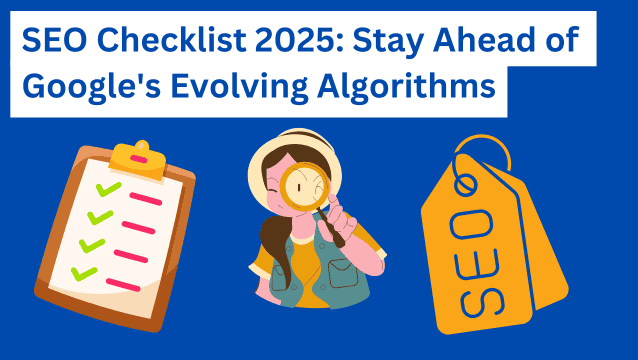Nailing user experience (UX) is a twofold task. First, ensure users have a seamless journey with your product or website. Second, ensure you’re using the right tools to meet customer expectations.
Given the dynamic digital landscape, staying on top means staying in the loop with the latest UX trends. You’ve got to integrate the newest techniques and tools into your work. Otherwise, you might find yourself losing that competitive edge.
We’ll dive into the shifting UX landscape to help you better understand the new-age UX design process. Read on as we unpack the top trends to watch out for in the upcoming year. Lastly, using an enterprise password manager can provide an additional layer of security and ensure seamless access management
How is UX evolving?
As we look to the future of UX, we need to understand that customer preferences have taken center stage. Users want intelligent, conversational interfaces and simple, personalized experiences.
Here are some key takeaways:
Personalized design experiences
Personalized experiences through custom web design have become the norm today. Brands are leaving generic designs behind. And ready to take on the challenge of designing experiences that resonate uniquely with different user segments. They aim to create personalized experiences that help users connect with brands. This includes crafting a strong brand identity through logo design, visual language, and brand storytelling that connects with users on an emotional level.
More accessible designs
Accessibility needs to be front and center of your design strategy. Your product must resonate with every user. Emphasis on every, as your users’ physical or cognitive abilities shouldn’t matter.
The key to ensuring this is embedding accessibility into the design DNA of the product right from the start. When you focus on inclusive design, your product becomes usable by more people. This promotes equal access and a positive user experience for everyone.
Accessibility in UX is especially important for healthcare-related services. So, for example, website design for therapists must be handled in a way that anticipates the needs of prospective service users in terms of everything from the color pallet to the font choice and page layout.
Demand for immersive experiences
Virtual and augmented reality, along with AI advancements, have brought in a new design phase. Now, companies are using immersive technology to predict how users will behave and push their limits. UX designers can expect more experiences going beyond the traditional. Even users will get more immersive and captivating journeys. As these tech stacks grow, they’ll have a more prominent role in creating unique user experiences.
Simplicity is key
The overload of technology and information has made simplicity an important factor. For UX, the goal is clear: lighten the cognitive load on users. A seamless, straightforward interface can enhance user engagement. It also makes sure users can navigate your product with ease.
Simply put, don’t over-complicate things.
Voice-assisted interfaces
Siri and Alexa have changed how we use technology by giving us voice assistance. UX designers must consider how users interact with their products using voice commands. It’s important to optimize them for natural language processing. Building a smooth experience that uses spoken communication is also crucial.
Top UX trends of 2025
Now that you know how design has changed and keeps changing, let’s go over the UX trends expected in 2025 and beyond.
1. Micro-interactions to elevate user engagement
Micro-interactions are small interactive moments or functional animations that provide visual feedback. They enhance UX by guiding users to make your product more intuitive and engaging, whether it’s a simple swipe, gamified animation, celebratory GIF, or chatbot.
The react feature on Facebook is an excellent example of micro-interactions:
When users tap and hold the standard icon for a post, Facebook shows them a list of interactions. What’s more, each of the emojis has real-time movements, making the experience even more fun.
2. Data visualization to make complex data more digestible
Data visualization involves turning information into visual assets. The focus is to make complex concepts easier for people to wrap their heads around. Think of bar charts to help you compare values or line charts to map trends over time.
Here’s a great example:
Incorporating data visualization in UX design takes things a step further. When you lay out data clearly, your visuals and presentations look good. But they also communicate your intended message effectively. In some cases, designers may even use techniques to unpixelate images, ensuring clarity and sharpness in visual elements.
With the increasing importance of data visualization in UX, beginner courses in Power BI are becoming essential for designers who want to leverage data effectively in their designs. Power BI’s capabilities in handling large datasets and transforming them into interactive visualizations can empower designers to create more insightful and actionable UX interfaces.
And you know what’s even better? Users can access and understand your data easily and take action quickly.
3. Contextual personalization to shape unique experiences
Everyone is moving away from third-party cookies. This trend means you can no longer rely on using personal data for customized online experiences. Instead, you must personalize based on what users do in one session.
Suppose a website visitor shows interest in a specific range of products. To make it more personal, you can suggest similar products to what they’re looking at. Instead of using personal information, you can use the page URL for recommendations.
Besides, building a custom AI chatbot can further enhance this real-time personalization. The chatbot can respond dynamically to user behavior within the session, answering questions, recommending products, or guiding the user, all without relying on stored personal data.
4. Chatbots to enhance user interactions
According to McKinsey, three in four people prefer self-service to in-person interactions. So, we can expect chatbots to be a part of more UI designs soon.
Think about it: chatbots help optimize business processes through effective customer communication. They also lower resolution time by processing multiple requests at once and can give quick answers to common issues. Take the Z Bot from Zendesk, for instance. It
offers visitors clickable options to accelerate support and user onboarding.
Businesses use chatbots for more than just customer support; they also serve other business functions. These include sales and marketing. You can use these tools to find potential customers and help them choose products. Or even as an aid for transactions if you like. Many businesses collaborate with a chatbot development company to create customized solutions that meet their specific needs.
This multifaceted functionality positions chatbots as versatile business tools. They do more than just ask and answer questions, improving the user experience.
5. Emotionally intelligent interfaces to create UX designs that resonate
Emotionally intelligent design isn’t just about creating designs that “click.” It’s also about designing something that evokes an emotional response. Think of it as building empathetic designs with a heart.
Asana nails this trend brilliantly. After finishing a task, a yeti, narwhal, otter, or phoenix flies across the screen like a shooting star. This friendly appearance instantly elevates your mood, making you smile.
6. Microcopy and UX-focused content design to bring clarity to communication
Readability is a crucial aspect of UX design, whether for CTAs, website copy, or slogans. At the same time, people want straightforward information. It doesn’t matter whether they want a solution to their problem or a quick rundown of what your product does. So, the last thing you want is to drown your content in unnecessary fluff.
If you do, you’ll see lower customer engagement and reduced conversions. That’s why simply using readable fonts and providing a simple context menu isn’t enough. You must also master the art of brevity. Use short sentences that get straight to the point without any unnecessary detours. A good tip is to opt for the “present tense + active voice” and use numerals whenever you can.
By making your microcopy clear and concise, you can provide the information your users need without extra details.
7. User feedback collection to empower user input
What better way to provide an unbeatable user experience than asking users themselves?
There are two ways to go about it: active or passive feedback collection. When strategically placing trigger surveys, you can use “active mode.” This mode asks for feedback after completing a task or at a specific touchpoint.
On the other hand, passive mode gives users a seamless way to share their thoughts without friction. For instance, on Walmart’s website, you can provide feedback without any obligations when you scroll.
8. Artificial intelligence and augmented reality to craft immersive experiences
We also expect more UX designers to use artificial intelligence and augmented reality in their creative processes. AI and machine learning can create tailored content based on individual preferences. Amazing, right?
This new UX design makes things look better and helps people feel more connected to digital screens. For example, by integrating augmented reality, UX designers can add 3D elements. These elements transform a standard user interface into something spectacular, instantly capturing users’ attention.
9. Touchless experiences to prioritize customer convenience
Touchless experiences will shape the UX landscape. This shift is more than a passing trend born out of pandemic precautions. Instead, it’s a resounding shift in our daily interactions.
Case in point: 53% of Americans have digital wallets, reflecting our aversion to shared surfaces. Intuitive user interfaces are now changing how we engage with tech globally.
The UX arena will also see a fast move away from passwords – infamous for security problems. In its stead, biometrics will take the spotlight. Think fingerprint scans, facial recognition, and multi-factor confirmations. Advances like these not only improve security but also user experiences.
What is the biggest challenge for UX in 2025?
UX is a dynamic field, so challenges are par for the course. Some of these hurdles will likely persist or evolve. Here are the most significant UX challenges to know:
Keeping up with the technology curve
To deliver seamless user experiences across diverse platforms, businesses and UX professionals have to adapt. Especially when considering the constant evolution of interfaces, devices, and interaction methods. Another crucial task for designers is balancing innovation with accessibility. They should focus on designing experiences that are inclusive for users with varying abilities and needs.
User data and privacy considerations
Implementing data-driven product and web design strategies is no simple task. And ensuring you’re respecting user privacy rights and maintaining trust makes it even harder. As technology becomes more integrated into our lives, UX professionals must consider the ethical implications of using personal data. especially in the healthcare industry, where healthcare data privacy is paramount. This is not just about complying with regulations, but also about building trust with patients and ensuring the security of their sensitive medical information.
These considerations include:
- How much data to collect
- How to use the collected data
- How to communicate those practices to users.
The idea is to tailor user experiences without intruding or crossing privacy boundaries.
In this digital age, safeguarding user privacy often involves employing additional security measures. For instance, understanding how to use VPN and incorporating it into UX design processes can provide enhanced data security, ensuring that user interactions with products and websites remain private and protected.
To strengthen internal security further, implementing DNSSEC helps prevent DNS spoofing and other attacks by verifying the authenticity of DNS responses. This added layer of protection ensures users are connecting to legitimate sites, reinforcing trust and safeguarding sensitive data from interception or redirection.
A data privacy management software can further bolster these efforts by automating many privacy-related tasks, identifying potential privacy risks, and ensuring compliance with data protection regulations. This allows businesses to build trust with users while maintaining data integrity and avoiding costly breaches.
Inclusive design and accessibility
Businesses and UX professionals need to adapt to provide smooth user experiences. This is crucial, given the ever-changing interfaces, devices, and ways we interact on various platforms. Then, there’s the duty of balancing innovation with accessibility. Designers must focus on creating inclusive experiences for users with varying abilities and needs.
Maintaining brand consistency
An inconsistent user experience is often the result of inconsistent design across platforms. And to make it worse, it can harm user satisfaction. Siloed processes, time limits, and vague guidelines also hinder you from building a cohesive brand.
Communication gaps between teams are another vital issue. Luckily, there’s a solution.
Design teams need a current design system with standardized components, guidelines, and styles. A system helps every team member be on the same page, making maintaining brand consistency for projects more manageable.
Here’s a quick graphic to help you get started:
Continuous learning and interdisciplinary collaboration
Designers face the ongoing challenge of staying updated on trends, tools, and methods. Then, there’s also the issue of partnering with different professionals. So, what’s the problem here?
Talking to devs, data scientists, and business analysts isn’t a cakewalk. It may create problems in the design process, especially when incorporating diverse viewpoints. Also, designers may not be comfortable putting themselves out there.
Takeaway
By keeping an eye on these UX trends, you can deliver improved virtual UX and create better products. But, you need to take extra initiative to keep your competitive edge.
Be sure to stay informed about the recent developments in the digital landscape. If there’s a brand-new tool, you should know about it. If your clients like a new UI design, be ready to dig into it.
If you’re looking for a one-stop resource to bolster your SEO and PR strategies, check out uSERP. Our helpful blogs and reports keep you up-to-date with the digital world.


